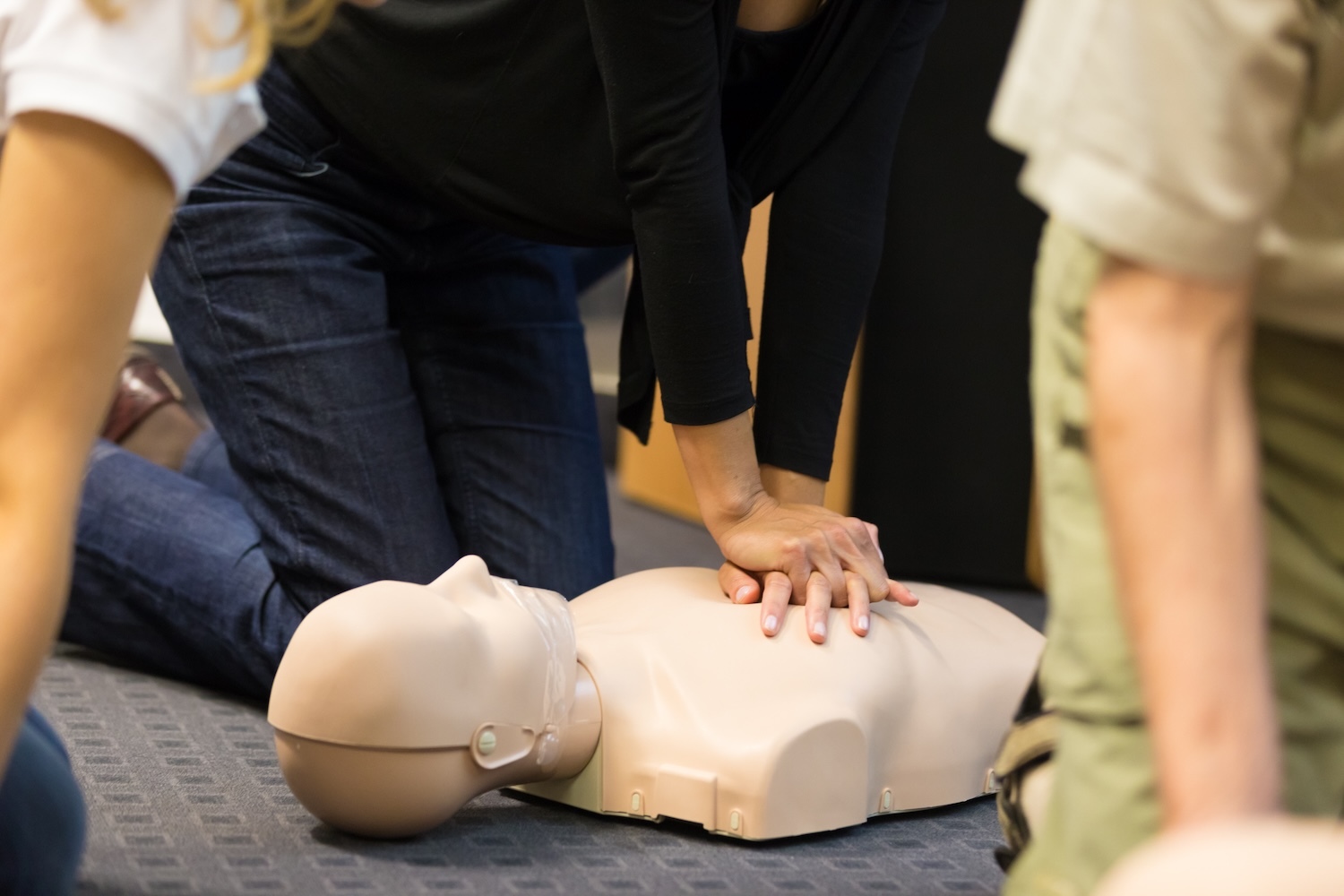What to Do If Someone Faints or Becomes Unresponsive
Knowing what to do if someone faints or becomes unresponsive is one of the most essential first aid skills. Fainting can happen anywhere — in the workplace, at school, or even at home — and quick, confident first aid can prevent further injury and potentially save a life.
In this guide, we’ll explain how to recognise the signs of fainting and unresponsiveness, what immediate first aid steps to take, and when to call Triple Zero (000). All information is based on the Australian Resuscitation Council (ARC) Guidelines — the same principles taught in nationally recognised first aid courses such as HLTAID009 Provide Cardiopulmonary Resuscitation and HLTAID011 Provide First Aid.
Understanding Fainting and Unresponsiveness
Fainting, or syncope, is a temporary loss of consciousness caused by a sudden drop in blood flow to the brain. It usually lasts only a few seconds or minutes.
Becoming unresponsive, however, can indicate a more serious medical emergency such as cardiac arrest, severe shock, head injury, or low blood sugar.
Recognising the difference helps you respond appropriately and quickly.
Common Causes of Fainting
- Standing for too long or suddenly standing up
- Heat exhaustion or dehydration
- Emotional distress or shock
- Low blood sugar (especially in people with diabetes)
- Pain, fear, or sudden stress
Step-by-Step First Aid for Fainting or Unresponsiveness
Step 1: Check for Danger
Before helping, ensure the area is safe for you, the person, and any bystanders.
Step 2: Response – Check if the Person is Conscious
Gently tap their shoulders and ask loudly, “Are you okay?”
- If they respond, help them lie down and raise their legs slightly to improve blood flow.
- If they do not respond, proceed to the next step.
Step 3: Send for Help
If there’s no response, call Triple Zero (000) or ask someone nearby to do so.
If available, have someone locate an AED (Automated External Defibrillator) and bring it to the scene.
Step 4: Airway – Open and Check
Tilt the head back and lift the chin to ensure the airway is clear.
Remove any visible obstructions (like food or vomit) carefully.
Step 5: Breathing – Look, Listen, and Feel
Check for normal breathing for up to 10 seconds.
- If breathing normally, place the person in the recovery position and monitor closely until they regain full consciousness.
- If not breathing normally, start CPR immediately.
Step 6: CPR – Cardiopulmonary Resuscitation
Start CPR with 30 chest compressions followed by 2 breaths, and continue until help arrives or the person starts breathing normally.
If an AED is available, turn it on and follow the voice prompts.
After the Person Regains Consciousness
If the person has only fainted and quickly regains consciousness:
- Encourage them to lie down for several minutes and breathe slowly.
- Offer cool water once they’re alert.
- Check for injuries caused by the fall.
- Do not let them stand suddenly — they could faint again.
- Seek medical review if fainting was unexplained, recurrent, or accompanied by chest pain, dizziness, or shortness of breath.
When to Call Triple Zero (000)
Always call emergency services if the person:
- Does not regain consciousness quickly
- Is not breathing normally
- Has a known heart condition or diabetes
- Experiences chest pain, seizure, or severe bleeding
- Is pregnant, elderly, or injured during the episode
Why First Aid Training Matters
Knowing the correct first aid response for fainting, unresponsiveness, and other medical emergencies can make a life-saving difference.
In accredited training such as HLTAID009 Provide Cardiopulmonary Resuscitation and HLTAID011 Provide First Aid, you’ll learn to:
- Apply the DRSABCD action plan
- Recognise life-threatening conditions early
- Perform CPR and use an AED with confidence
- Respond to common workplace and home emergencies
Take Action Today
Don’t wait until an emergency happens.
Build your confidence and skills with nationally recognised first aid training delivered by experienced trainers at Australian Pacific Training Solutions, part of the Allens Training Pty Ltd (RTO 90909) network.
Whether you’re an individual refreshing your CPR skills or a workplace organising on-site group training, APTS can help you stay compliant and prepared.
Visit auspactraining.com.au to explore our upcoming first aid courses



